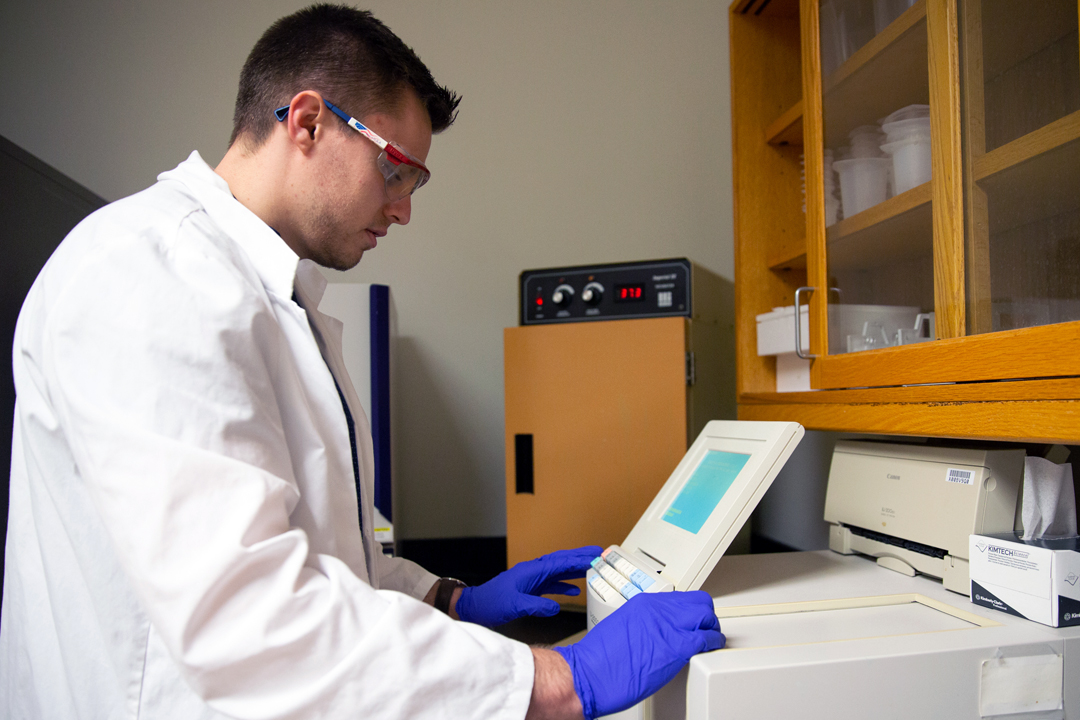Student to Student: NUDIX hydrolase enzymes
By Kevin DiMagno
Jaime Huynh, RIT Student
Kevin DiMagno is a fourth-year biochemistry major in the Thomas H. Gosnell School of Life Sciences, and his mentor/advisor is Dr. Suzanne O’ Handley.
Following the Structural Genomics Initiative to solve as many unique protein structures as possible; the Protein Data Bank contains several enzymes whose structures have been solved, but for which no enzymatic activity has been determined. To counteract the growing number of structurally determined proteins with unknown function, the Enzyme Function Initiative was started to determine as many unique enzyme functions as possible. There are several putative NUDIX Hydrolase superfamily members whose structures have been solved, but for which no enzymatic activity has been determined. Using computational based software and databases such as BLAST, Dali, SCOP, and PDB, I worked on predicting the function of the various purified Nudix hydrolase enzymes we had in the lab.
The NUDIX hydrolase enzymes that I am working on are a superfamily of enzymes that cleave nucleoside diphosphates linked to some X moiety. NUDIX hydrolases are found in all three domains of life. The focus of my research now is to determine the activity of multiple NUDIX hydrolases that have a known structure by conducting numerous enzymatic assays. By performing various enzyme assays, I have determined the best substrates, optimal pH, and metal concentration for each enzyme. I am currently performing kinetics assays to determine the best substrate based on both kcat and Km.
How did you come to study biochemistry at RIT?
I became a biochemistry major after I transferred to RIT in my junior year because I believed that a biochemistry major would best prepare me for medical school once I graduated.
You are researching NUDIX hydrolase enzymes. How did you become interested in this topic?
Because of my interest in medicine, I became interested in characterizing the function of NUDIX hydrolases because they are important in removing toxic by-products in many cellular processes such as cellular metabolism and mRNA processing. By determining the function of these enzymes, I hope that they can be used as biomarkers and potential drug targets due to their importance.








